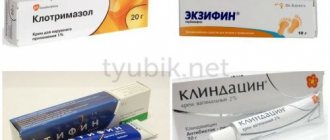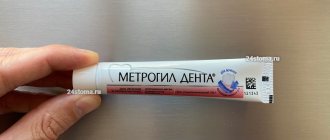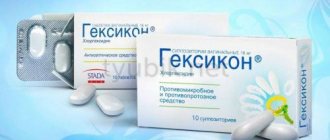Effective treatment of stomatitis in adults
Treatment of stomatitis in adults largely depends on the type of this disease, as well as concomitant diseases that provoke the appearance of ulcers and inflammation in the mouth. The most interesting thing is that the diagnosis of stomatitis is still carried out visually: the patient undergoes tests only if other, more serious diseases are suspected. Effective therapy for stomatitis is possible, but only if the type of disease is correctly determined. Recovery usually occurs within one or several weeks, but there are also more severe forms when long-term rehabilitation is required for complete recovery. Let's look at the main types of disease and drugs for the treatment of stomatitis in adults.
Why does the disease occur?
Stomatitis can be an independent disease or a symptom of systemic diseases. Immunodeficiency, pemphigus, streptoderma - all these are pathologies that create conditions for its development. Mechanical damage, which is possible if there are sharp dental crowns or low-quality dentures in the mouth, also lead to irritation of the mucous membranes.
Dentists agree that the disease occurs due to:
- failure to comply with oral hygiene rules;
- habits of chewing hard foreign objects;
- improper installation of braces, dental bridges, crowns;
- long-term use of certain medications;
- smoking;
- using drugs by placing them under the tongue or “behind the lip”;
- unbalanced nutrition, progressive vitamin deficiency;
- malignant tumors located in the mouth;
- prolonged stress;
- hormonal disorders.
Today it has been proven that the need to use drugs to treat stomatitis often arises in people who are accustomed to using toothpaste that contains sodium lauryl sulfate. This is a compound that promotes the formation of thick foam during hygiene measures. It has been established that sodium lauryl sulfate “pulls” moisture from the mucous membranes of the mouth , as a result of which they become more sensitive to negative external influences. Therefore, when purchasing a hygiene product, it is important to study its composition.
Treatment of herpetic stomatitis
Treatment of stomatitis after detection can be carried out many times (once a year or more often), since once settled in our body, the herpes virus remains there for life. Herpes stomatitis is characterized by the accumulation of reddish transparent blisters on the lips and inside the mouth, so it is quite easy to detect. Especially often, herpetic stomatitis manifests itself against the background of decreased immunity, vitamin deficiency, hypothermia and stress. Remember that herpetic stomatitis in adults is contagious, so you should avoid tactile contact.
Types of drugs
- Antiviral agents.
- Immunostimulants (as a preventative measure).
- Ointments (including to eliminate visual manifestations of the disease).
Medicines for stomatitis
Stomatitis is an inflammatory process of the oral mucosa, which is accompanied by the appearance of painful ulcers, increased body temperature, general weakness and discomfort when eating. What effective medications can be used for treating stomatitis in adults and children?
Principles of treatment of stomatitis
To effectively treat stomatitis, several types of medications are used, each of which performs its own specific task:
- Anesthetic drugs help relieve pain.
- Antipyretics reduce elevated body temperature.
- Antiviral drugs are effective for viral stomatitis.
- Antifungal medications kill fungal infections.
- Antihistamines relieve allergy symptoms.
- Drugs that stimulate the restoration of damaged mucosal tissue.
- Immunomodulators, vitamin complexes to maintain the body's defenses.
Antibacterial and antiviral drugs
In case of development of stomatitis against the background of a bacterial infection, antibacterial drugs are used in complex therapy of the disease:
- Amoxicillin,
- Ampioks,
- Gentamicin,
- Doxycycline,
- Kanamycin,
- Lincomycin,
- Ofloxacin,
- Penicillin.
An antibiotic is prescribed by a specialist after analyzing the sensitivity of the infection to antibacterial drugs. At the same time, doctors often prescribe probiotics to prevent dysbiosis and candidiasis, as well as antihistamines for stomatitis:
- Ketotifen,
- Tavegil,
- Cetirizine.
Stomatitis caused by a viral infection is treated with antiviral drugs:
- Acyclovir,
- Anaferon,
- Immunal,
- Zovirax.
To maintain immunity, B vitamins are used, as well as vitamin complexes containing folic and ascorbic acid.
Candidal stomatitis is treated with the following medications:
- Dekamin,
- Clotrimazole,
- Levorin,
- Nystatin,
- Fluconazole.
Medicines for topical use
Since stomatitis is accompanied by inflammation of the oral mucosa and the appearance of painful ulcers, effective treatments for the disease are various medications in the form of rinsing solutions, as well as gels and ointments for treating wounds, which effectively help against stomatitis in adults and children. Rinse preparations:
- Vagotil,
- Galavit,
- Hexoral,
- Malavit,
- Miramistin,
- Propolis tincture,
- Decoctions of chamomile, oak bark, calendula,
- Rotokan,
- Stomatophyte,
- Furacilin,
- Chlorhexidine.
Gels and ointments for treating the oral mucosa:
- Acyclovir,
- Bonafton,
- Vinylin,
- Lidochlor gel,
- Viferon ointment,
- Ointment Tebrofen,
- Metrogil Denta,
- Sea buckthorn oil,
- Oxolinic ointment,
- Solcoseryl.
Painkillers
Stomatitis is accompanied by the appearance of painful ulcers in the mouth. Painkillers are indispensable in this case, as they alleviate the patient’s condition and reduce pain:
- Anestezin.
- Hexoral - a medicine for stomatitis in tablet form contains chlorhexidine and benzocaine, has an analgesic effect, and destroys infection.
- Decathylene.
- Instillagel contains chlorhexidine and lidocaine, perfectly relieves inflammation, pain and swelling.
- Kamistad is a gel that must be applied in the form of applications to the affected areas of the mucosa.
- Lidocaine Asept in aerosol form.
- Lidochlor gel can be used to treat viral and bacterial stomatitis.
- Stopangin is a combined remedy for bacterial stomatitis.
- Trimekain.
- Cholisal gel has the ability to penetrate deep into tissues and also create a protective film on the surface of the mucous membrane.
Painkillers for stomatitis for children can only be used as prescribed by a pediatrician.
Preparations for healing ulcers
To quickly heal ulcers and restore damaged tissues of the oral cavity, the following drugs are used:
- Vinylin,
- Vitamin A,
- Rose oil,
- Rosehip oil,
- Sea buckthorn oil,
- Solcoseryl.
Medicines in the form of sprays
Medicines for stomatitis in the form of sprays are very effective in the complex treatment of various forms of the disease, as they provide a quick therapeutic effect. Popular sprays for the treatment of stomatitis:
- Givalex has an antifungal, enveloping and antimicrobial effect.
- Inhalipt is a drug from the sulfonamide group that effectively destroys infection in the treatment of aphthous stomatitis.
- Isatis contains natural ingredients: extracts of dandelion, burdock, violet, oregano, tea tree essential oil. The spray destroys infection, stops bleeding from ulcers, promotes healing and restoration of the mucous membrane.
- Iodine-based Lugol's is an excellent antiseptic.
- Propolis heals wounds, kills infections, and also has a beneficial effect on local immunity.
- Proposol relieves inflammation and accelerates the healing of the mucous membrane.
- Tantum Verde provides rapid saturation of oral tissues with medicinal components, effectively relieves pain and relieves swelling.
Chlorophyllipt is a bactericidal, wound-healing drug that is effective in the treatment of bacterial stomatitis.
Related products View all products
Imudon, tab.
d/rass. №24 291.00 RUR
More details
Imudon, tab. d/rass. No. 40
412,00 ₽
More details
← Previous article Medicines for high acidity
Next article → Medicines for muscles
Treatment of candidal stomatitis
A type of stomatitis that is caused by a special type of fungus – Candida albicans. Very often, candidal stomatitis begins with glossitis, which is why its second name is stomatitis on the tongue. Treatment in this case requires fairly prompt treatment, since in adults it is quite painful and is accompanied by a burning sensation in the mucous membrane and sore throat. On the inner surface of the lips and cheeks, as well as on the tongue, characteristic foci of inflammation appear, covered with a white cheesy coating.
Treatment methods
- Treatment of common diseases (if detected).
- Antimicrobial therapy.
- Preventive rinses.
Treatment of aphthous stomatitis
A distinctive feature of this type of stomatitis is the appearance of so-called aphthae on the oral mucosa. These are small round ulcers with redness at the edges, the touch of which causes unpleasant painful sensations. Often occurs as a result of the activity of microorganisms (in particular, staphylococcus). Treating aphthous stomatitis at home is only recommended if it is not caused by a more severe illness. Often aphthous stomatitis occurs with problems with the immune system, liver and gastrointestinal tract.
Treatment methods
- Allergy therapy.
- Antiseptic therapy (treatment of aphthae with anti-inflammatory solutions, gels and ointments).
- Dental treatment and sanitation of the oral cavity (after dental treatment, stomatitis occurs less frequently than in the presence of carious lesions).
- Immunotherapy.
- Diet.
Causes of stomatitis
Inflammation of the oral mucosa can be caused by various reasons.
- Mucosal injury6.
- Viral, bacterial or fungal infection6.
- Allergy2.
- Immunity disorders (autoallergy, that is, a reaction to one’s own altered tissues2).
- Diseases of the blood, digestive, cardiovascular, nervous and endocrine systems2.
- Hypovitaminosis - lack of vitamins C, B1, B12, E, D32.
- Common infectious processes: measles, rubella, scarlet fever and diphtheria, infectious mononucleosis, tuberculosis and others1.
Only a specialist can understand the causes of stomatitis. Therefore, if symptoms of the disease appear, you should definitely contact your dentist.
Inflammatory diseases of the oral cavity can occur in a child of any age6. Immaturity of the body is the primary factor predisposing to the occurrence of stomatitis in children under one year of age. The mucous membrane of the oral cavity during this period of a child’s life is very vulnerable, its natural protective properties are reduced. The immunity received from the mother during fetal development and which protected the baby immediately after birth weakens every day. Therefore, the infection easily penetrates the mucous membrane and causes its inflammation. Most often at this age, candidal stomatitis occurs, commonly called thrush1,6.
From the age of one to 3 years, children actively develop immune mechanisms to protect the oral mucosa (local immunity), but its permeability to viruses remains extremely high. Therefore, in a 2-3 year old child, stomatitis is more likely to be viral, in the vast majority of cases - herpetic1,3,4.
From 4 to 12 years of age, stomatitis in children is more often caused by allergic and autoimmune reactions. In particular, chronic aphthous forms of the disease occur during this period1.
Up to contents
Treatment of ulcerative stomatitis
Ulcerative stomatitis very often occurs due to poor oral hygiene and bad habits (especially smoking). Often this type of stomatitis at its onset is confused with periodontitis and gingivitis, since it is characterized by inflammation of the gums, a grayish coating around the teeth and death of soft tissues. Often accompanied by fever and fever. One of the few forms of stomatitis, which often requires treatment by a doctor, and in the most advanced cases, surgical intervention.
Treatment methods
- Antibiotic therapy.
- Antibacterial treatment of affected areas.
- Surgical intervention (in severe cases, removal of areas of dead tissue and gum grafting).
Treatment of bacterial stomatitis
This type of stomatitis is also called prosthetic stomatitis, since it occurs due to unsatisfactory care of the orthopedic structure, when many pathogenic microorganisms accumulate in the area of contact between the prosthesis and soft tissues. After treating foci of inflammation, it is necessary to carry out complete cleaning and antibacterial treatment of the prosthesis or replace it. This type of stomatitis should not be confused with allergic stomatitis, which develops against the background of an allergy to the prosthetic material. In this case, the prosthesis must be changed to a hypoallergenic one.
Treatment methods
- Anti-infective therapy.
- Mouth rinse.
Sores in the mouth as a sign of aphthous stomatitis
Wounds in the mouth can arise as a result of the development in a person of a separate independent disease of the oral mucosa, caused by the growth and development of pathogenic microorganisms. But, in addition, the cause of such wounds may also be hidden in the general somatic condition of an adult or child.
In most cases, mouth ulcers are symptoms of a disease such as canker sores. Stomatitis is a lesion of the human oral mucosa that occurs as a result of an atypical reaction of the immune system to foreign irritants. Depending on the nature and causes of the disease, stomatitis can be of various types: ulcerative, herpetic, allergic, vesicular, etc. But people most often have to deal with the aphthous form of this disease.
Let's name the main symptoms of aphthous stomatitis:
- The appearance of round ulcers (ulcers) in a person’s mouth, which are grayish in color and surrounded by a red, inflamed rim. Ulcers are located either separately or in groups and have different sizes.
- Painful sensations in the affected areas of the upper and lower palate of a person that occur during eating, drinking, or talking.
- Deterioration of a person’s general well-being, weakness.
- Temperature increase. But this is not a mandatory symptom; it occurs in most cases in children, since they are more difficult to tolerate aphthous stomatitis in the oral cavity.
- Enlarged submandibular lymph nodes. This symptom of aphthous stomatitis also occurs more often in children than in adults.
Treatment of allergic stomatitis
This type of stomatitis is caused by the body's immunological response to contact with an allergen. The role of the latter can be played by anything: food products, new oral hygiene products, dentures, animal hair and much more. At risk are patients who are predisposed to allergies or suffer from various autoimmune diseases. A distinctive feature of allergic stomatitis is the acute onset of the disease, accompanied by an increase in temperature, severe pain and putrid odor from the mouth, which does not disappear even after thorough brushing of the teeth.
Treatment methods
- Identifying the allergen and eliminating it (or minimizing contact).
- Antihistamine therapy.
- Relief of inflammation with corticosteroids.
- Taking analgesics to relieve pain.
- Local antiseptic drugs
- Diet.
Stomatitis
Chronic herpetic stomatitis
Chronic herpetic stomatitis is a sluggish disease of the oral mucosa caused by the herpes simplex virus (herpesvirus) existing in the patient's body.
After the first contact, the herpes simplex virus remains forever in the body, causing periodic exacerbations of the disease with a decrease in general immunity. Exacerbation of the disease can cause hypothermia, stress, severe general illnesses, and in women - menstruation. In addition, the development of chronic herpes is promoted by the influence of local factors, including drying out of the mucous membrane, increased insolation (prolonged exposure to intense sun) and smoking.
Exacerbation of chronic herpetic stomatitis occurs during the following periods.
- Incubation.
Lasts 1-4 days, there are signs of intoxication of the body, an increase in body temperature to 37-40 degrees (depending on the severity of the disease), general weakness, muscle aches, enlarged lymph nodes.
- Prodromal (catarrhal).
When signs of inflammation of the mucous membrane are expressed, but there are no rashes on it yet. There is pronounced catarrhal gingivitis (redness, swelling and severe pain of the mucous membrane), signs of general intoxication of the body increase, and discomfort in the oral cavity progresses.
- Rashes (the period of development of the disease).
Characterized by the appearance of vesicles (bubbles) on the oral mucosa. Their number varies from 1-3 to several dozen, depending on the severity of herpetic stomatitis. The blisters contain serous exudate. After opening, painful ulcers are formed, covered with a white-yellow coating, with bloody crusts on the skin and red border of the lips.
- The extinction of the disease and recovery (reconvalescence).
Characterized by the healing process of ulcers.
Chronic aphthous stomatitis
It is an inflammatory disease of the oral mucosa, which is characterized by the appearance of aphthae - round-shaped mucosal defects with underlying inflamed mucosa, covered with a white-gray fibrinous coating. It occurs with frequent exacerbations and periodic remissions.
The reasons for the development of exacerbations of aphthous stomatitis are:
- foci of chronic infection in the body (diseases of the ENT organs, gastrointestinal tract);
- frequent stress;
- occupational hazards;
- climate change.
There are two forms of chronic recurrent aphthous stomatitis - mild and severe (deep recurrent scarring aphthae).
With a mild course of chronic aphthous stomatitis, a small, round, hyperemic, sharply painful spot with a diameter of up to 1 cm appears on the mucous membrane. In the first hours, the symptoms increase, the aphtha becomes covered with a gray-white fibrous-necrotic coating. The number of afts is 1-3.
After 2-4 days, the plaque on the aphthae clears. Over the next 3-4 days, the defect epithelializes.
A severe form of stomatitis (Setton's aphtha) is accompanied by the appearance of multiple, sharply painful ulcers that do not heal for a long time - for 6-18 months.
Vincent's ulcerative necrotizing stomatitis
One of the most severe forms of damage to the oral mucosa. The risk group is young people (17-30 years old), often men. Stomatitis has a seasonal course, occurring in the autumn-spring period. Necrotizing ulcerative stomatitis occurs with profound immune deficiency and is usually a symptom of blood leukemia or HIV infection.
The pathological process develops in the area of the groove between the tooth and the gum when the barrier properties of the mucous membrane are disrupted and bacteria (spirochetes, fusobacteria) multiply. With Vincent's ulcerative-necrotic stomatitis, a slight malaise appears, then sharply painful ulcerations of the mucous membrane appear, covered first with a white-yellow, and then green, purulent discharge.
As the disease progresses, symptoms of intoxication increase, body temperature rises, appetite and performance decrease, and bad breath appears.
Prosthetic stomatitis
Prosthetic stomatitis develops at the site of contact of the mucous membrane with an orthopedic structure (crown, bridge, prosthetic clasp). The development of the disease is often associated with a violation of the technique of manufacturing or installing the prosthesis, as well as exposure to chemicals included in the material from which it is made.
In most cases, prosthetic stomatitis affects elderly people, patients with chronic diseases of the gastrointestinal tract and those who do not follow the rules for caring for prosthetic structures.
Treatment of stomatitis in children
Treatment of childhood and adult stomatitis follows the same methods. At the same time, some drugs used for adults are replaced with those that are better suited for the child’s body. First of all, we are talking about antibiotics, antiseptics and drugs to enhance immunity. Children are often prescribed more gentle methods, which include the use of herbs and natural tinctures for rinsing. At an early age, dentists recommend preventing stomatitis using traditional medicine.
| Age | Type of disease |
| From 0 to 3 years | Candidal stomatitis, or childhood oral thrush. This type of stomatitis is especially common in infants. |
| 1 – 4 years | Aphthous and herpetic stomatitis caused by external infections and mechanical trauma to the oral cavity. |
| Children of primary and secondary school age | Allergic and aphthous stomatitis. |
Treatment of stomatitis at home
I would like to immediately note that treating stomatitis with folk remedies at home is possible, but you need to understand that in many cases it is impossible to do without a visit to a specialist and the use of antibiotics. Ignoring these points can lead to worsening of the disease and longer rehabilitation. In addition, on the Internet you can find a whole lot of “revolutionary” recipes for stomatitis, so you need to be able to separate the wheat from the chaff and understand which remedies can really help, and which are the fruit of the inflamed imagination of “couch healers”. Below we publish the most common methods of preventing and treating stomatitis with folk remedies, but please note that only an experienced specialist can draw up an optimal treatment plan.
In the case of children, treatment of stomatitis with folk remedies at home is used quite often. This is especially justified as a preventive measure, since the child’s body is more susceptible to the influence of the external environment. The most popular remedies are considered to be all kinds of decoctions, for the production of which chamomile, calendula, burdock, propolis and blackberry leaves are used. A homemade ointment is also used to treat stomatitis, which is made from novocaine, egg white and honey. Be that as it may, if your child shows signs of stomatitis, it is best to immediately take him to a specialist who can make the correct diagnosis and plan treatment.
Treating stomatitis with home remedies
| Facilities | Description |
| Hydrogen peroxide | Rinsing with a solution of hydrogen peroxide helps reduce discomfort and has an antiseptic effect. |
| Baking soda | Treatment of stomatitis in adults with soda is recommended when the disease is detected in the initial stages. A solution of the substance (a spoon in a glass of water) is recommended for rinsing. |
| Decoctions of chamomile, rose hips and calendula | They have disinfecting properties and contain vitamins and nutrients to maintain oral health. |
What not to do with stomatitis
Often the older generation, when asked “how to treat your mouth for stomatitis?” Young mothers are advised to use alcohol solutions of brilliant green, blue, or fucorcin. It is believed that such products are good at disinfecting purulent wounds. However, this should not be done, since alcohol causes increased symptoms of inflammation and pain, which will negatively affect the child’s condition.
Another popular remedy against candidal stomatitis is borax in glycerin. The use of this product in childhood is also undesirable, since it contains quite toxic components, an overdose of which can cause significant harm to the baby’s health.
«
In the article we tried to provide the main means and methods of treating stomatitis in children. However, only a doctor can prescribe the correct treatment after examining the child. Delaying a visit to the doctor can cause serious complications and future health problems for the baby.







